The growth of hybrid shooting has meant that photographers aren’t just photographers anymore. They’re videographers, as well. Many working professionals, such as wedding photographers, see an increased demand for video from their clients. This means they need a camera that can do both jobs in one body. And for the most versatility, they’ll want a camera that can shoot 4K video at 60fps. Shooting at this frame rate gives your footage smoother movements and more detail. To help you choose, we’ve rounded up which cameras shoot 4K video at 60fps.
Why shoot 4K video at 60fps?
The standard playback for video is 29.7fps, so why would you want to shoot at 60fps? Essentially because it gives you more flexibility. Footage captured at 60fps gives you smoother playback at 29.7/30fps and it also gives you the option to produce slow motion footage.
At 60fps it’s only half speed, but the slow motion effects you can produce are still quite cool!
If you try slowing down your 4K video shot at 30fps you’ll notice that it looks less fluid, kind of staccato – to borrow a musical term – whereas slowed down footage captured at 60fps has more frames and looks smoother.
Think of it this way: if you record 1 second of 4K video at 60fps you are capturing double the number of frames as you would at 30fps. So when you slow your 4K 60fps video down to half speed, that 1 second stretches out to 2 seconds.
The best cameras for shooting 4K @ 60fps video
So which cameras shoot 4K video at 60fps? We’ve rounded up the best consumer cameras for 4K 60p footage to help with your filmmaking. You’ll see a mix of new and older cameras on this list. We’ve included older cameras like the Panasonic GH5 because they are still quality, viable cameras and available at a very reasonable cost. For a deeper dive into the many different camera types and features available, check out our range of camera buying guides.
Panasonic S5 II
Panasonic has been shifting its focus towards video rather than stills in recent years. So it comes as no surprise that the Lumix S5II delivers a huge step up in video features compared to the original S5. The S5 II can record 4:2:0 10-bit 6K (3:2) or 5.9K (16:9) footage at 30fps or 4:2:2 C4K and 4K video at up to 60fps internally.
Crucially, Panasonic has developed a new heat management system with an internal fan that enables unlimited recording times if you have the storage capacity and power.
There’s also HFR (High Frame Rate) recording at up to 120fps and Slow & Quick mode at up to 180fps – both in Full HD.
V-Log and V-Gamut are installed as standard rather than as a paid extra, plus there’s a new Real Time LUT function that enables colour grading LUTs to be uploaded to an SD card and applied in-camera.
Experienced videographers will also be pleased to see that a Waveform Monitor, Vector Scope and Zebra Pattern are available along with System Frequency (24.00Hz) and Synchro Scan (for setting precise shutter speeds).
What’s more, you’ll find 3.5mm ports for connecting an external microphone and headphones, while an XLR mic can be connected via the optional DMW-XLR1 adapter. Also, the S5 II has a full-size HDMI port for connecting external devices like a monitor/recorder.
Get the latest deals on the Panasonic S5 II at Amazon UK and Amazon US.

Panasonic GH5
Videographers will be pleased to learn that there’s unlimited 4K video recording – most cameras can only record in bursts of up to 29minutes and 59 seconds. There’s also a choice between MOV, MP4, AVCHD Progressive and AVCHD formats at a variety of frame rates, the system frequency can be set to 59.94Hz, 50.00Hz or 24.00Hz.
With GH5 it’s possible to shoot 4096 x 2160 4K at 24p (or 3840 x 2160 4K at 60p, 50p, 30p, 25p, 24p with no cropping), 4:2:2 10-bit Full HD (1080p) recording and 4K 4:2:2 10-bit ALL-Intra MP4/MOV (apart from at 60/50p) and Full HD 4:2:2 10-bit ALL-Intra recording. The step-up from 8-bit to 10-bit recording vastly increases the range of colours that can be recorded.
In addition, there’s a Waveform Monitor and Vector Scope to meet the needs of professional videographers. This embeds SMPTE-compliant Time Code with Rec Run or Free Run counting to aid with multiple device synchronisation.
A firmware update has also added high-resolution Anamorphic Video Mode and Hybrid Log Gamma for 4K HDR Video (for playback on HDR compatible televisions).
It’s also possible to add V-LogL recording via an optional software key (DMW-SFU1), with LUT (Look Up Table) and V-LogL View Assist to help experienced videographers get the colour and contrast they want.
Further good news for video shooters is that the GH5 can output live to an external recorder and simultaneous internal (there are dual SD card ports) and external recording is possible. Plus there’s an optional adaptor (DMW-XLR1) to allow an XLR microphone to be used for sound recording.
Get the latest deals on the Panasonic GH5 at Amazon UK and Amazon US.

Panasonic GH5 Mark II
The Lumix GH5 II is the latest in the GH series of mirrorless Micro Four Thirds cameras from Panasonic, however, the company has announced that the GH6 is in development and that the GH line is splitting in two. Panasonic will pitch the GH6 towards serious filmmakers looking for a small camera while the GH5 II is designed for keen content creators, those who are serious about their photography and producing videos for YouTube, but that don’t need all the more advanced features of the GH6.
As its name suggests, the Panasonic GH5 II is an upgrade to the Panasonic GH5, which dates from January 2017 and has been incredible popular amongst videographers.
Inside the Panasonic GH5 II is the same 20.3Mp sensor as is inside the GH5 but it has new AR (Anti-Reflective) coating that reduces flare and ghosting. It’s also coupled with the Venus Engine 10 processing engine that’s in the Panasonic Lumix S1H – the company’s full-frame video-centric mirrorless camera.
This combination enables the GH5 II to capture 10-bit 4:2:0 C4K (4096 x 2160) video at up to 60fps and 200Mbps or 10-bit 4:2:2 C4K at up to 30fps and 400Mbps. If an external recorder is connected via HDMI, it’s also possible to record C4K 4:2:2 10-bit 60p video externally while simultaneously recording in 4:2:0 to the card in the camera. There’s also a selection of 4K and 6K anamorphic modes.
Although the GH5 II cannot shoot raw video, V-Log L is pre-installed which means that it’s possible capture very flat footage that’s well-suited to grading. Helpfully, there’s a Log Assist mode so you can assess the footage more easily when you’re shooting in V-Log L. It’s also possible to display a waveform or vector scope to guide exposure.
Get the latest deals on the Panasonic GH5 Mark II at Amazon UK and Amazon US.

Panasonic GH6
There’s a huge range of video options and combinations available with the GH6, but the headlines are 5.7K 30p video in ProRes 422 HQ and ProRes 422, recording internally to a CFexpress Type B card. This is the first time that a CFexpress card has been seen in a Micro Four Thirds camera.
The GH6 is also capable of 5.7K 4:2:0 10-bit 60p/50p and 5.8K 30p/25p/24p 4:2:0 10-bit anamorphic 4:3 recording, using the whole sensor. In addition, 4:2:2 10-bit Cinema 4K 60p can be recorded internally while 4:2:2 10-bit Cinema 4K video at 60fps is simultaneously recorded over HDMI.
Alternatively, 4:2:0 10-bit 4K 120p (equivalent to 5x slow motion) and 4:2:2 10bit FHD 240p HFR (High Frame Rate) footage can be recorded with audio for creative speed ramping. VFR (Variable Frame Rate) recording can also be recorded with a FHD maximum of 300fps (equivalent to 12.5x slow motion) for more dynamic videos.
What’s more, 4K video at 120fps in Apple ProRes raw is now possible over HDMI, along with a number of new internal recording options, thanks to a Panasonic GH6 firmware update coming in July 2022.
Find the latest deals on the GH6 at Amazon UK and Amazon US.

Canon EOS R8
The Canon EOS R8 offers an impressive suite of video capabilities, especially considering its entry-level position in the full-frame mirrorless range. It can shoot uncropped 4K video at up to 60p, providing excellent quality derived from 6K capture. This ensures that the video quality is not compromised by sensor cropping, providing users with high-resolution footage that is ideal for both professional and enthusiast videography.
The EOS R8 also combines the sensor and autofocus advancements from its higher-end counterparts in a more compact and affordable body, making it an attractive option for those entering the realm of full-frame videography.
Overall, its video features make it suitable for a variety of applications, from vlogging to more serious filmmaking projects, offering flexibility and quality in a user-friendly package.
Find the latest deals on the Canon EOS R8 at Amazon UK and Amazon US

Canon EOS R10
The Canon EOS R10 can capture high-resolution 4K video at 60p, with a crop, and 4K at 30p, downsampled from 7K for the highest possible image quality. It also features 1080p recording at 120p for slow-motion effects, utilizing the full sensor width, which enhances its versatility in various shooting conditions.
The ability to shoot 4K from a higher resolution source ensures detailed and sharp footage. Additionally, the EOS R10 can capture 1080p at 120p, perfect for creating smooth slow-motion effects. Its use of the full sensor width in these modes allows for greater creative flexibility and better image quality.
The camera’s combination of a high-resolution sensor, advanced processing power, and robust video capabilities makes it an excellent choice for content creators who require both excellent still photography and superior video recording in a single device
Find the latest deals on the Canon EOS R10 at Amazon UK and Amazon US.

Nikon Zf
The Nikon Zf brings a classic design to the modern mirrorless market, equipped with the latest Expeed 7 processor. Its video capabilities are robust, offering 4K/60p video derived from 6K capture, along with 10-bit N-Log recording, catering to filmmakers who prioritize both style and substance. This capability is particularly beneficial for filmmakers who need to capture crisp, detailed images without compromising on dynamic range or color accuracy.
The camera incorporates Nikon’s latest Expeed 7 processor and features such as 3D Tracking AF, enhancing its performance in video capture. The combination of its stylish design and advanced video features make the Nikon Zf a unique offering in the market, appealing to photographers and videographers who value both aesthetics and performance. It’s suitable for a variety of uses, from professional video production to high-quality content creation.
Find the latest deals on the Nikon Zf at Amazon UK and Amazon US.

Fujifilm GFX100 Mark II
The Fujifilm GFX100 Mark II is a powerhouse in the medium format category, allowing internal recording of 4:2:2, 10-bit Apple ProRes, and via HDMI, it supports 12-bit 4:2:2 Apple ProRes RAW or Blackmagic RAW at up to 8K/30p. At 4K/60p, it utilizes the full width of its large 55mm sensor, ensuring exceptional video quality and seamless post-production workflow.
Find the latest deals on the Fujifilm GFX100 Mark II at Amazon UK and Amazon US.

GoPro Hero11 Black
Like clockwork, GroPro launched the Hero11 Black in September 2022 and like its recent predecessors, the best action camera you can buy shoots 4K video at 60fps, among a host of other resolutions and framerates (including 4K at 120fps).
While framerates and resolution remain largely the same on the Hero11 Black as they were on the Hero10, you’ll find that a larger sensor makes all the difference regarding video quality and low light performance.
Video quality is notably better than previous releases, with more detail, tone and colour retained in lower light conditions. The ability to film at 10-bit high quality does push the file sizes up and reduces battery life slightly, but it is well worth it for the boost it gives to dynamic range and the smoothness of motion, especially as the pace picks up.
And as always, GoPro’s HyperSmooth redefines what’s possible with digital stabilisation technology and provides an amazing smoothness for professional-quality video.
Find the latest deals on the GoPro Hero11 Black at Amazon UK and Amazon US.

GoPro Hero10 Black
With the Hero10 Black you get a giant upgrade in the form of a new GP2 processor, promising more power and a boost to framerate options, HyperSmooth 4.0, Auto file uploads, more Mods and upgrades rather than a major uplift in video resolutions.
In the Hero9 Black, 4K at 60fps is the setting that really replaced 1080p at 60fps, and that option remains with the Hero10 Black. The footage looks great, and there’s plenty of quality here.
The top resolutions from the Hero9 Black also remain at 5.4k and 4k. Instead, there’s a major boost in framerate, and to be honest, this is more useful (and more fun) for the majority of GoPro users. In the Hero10 Black, 5.4K is boosted to 60fps and 4K to 120fps. This essentially means that with the 4K footage, you can record 5 seconds of footage and play that back over 20 seconds with beautifully smooth motion.
New HyperSmooth 4.0 is available in 5.3K @ 30fps, 4K @ 60fps and 2.7K @ 120fps. The in-camera horizon levelling has also been boosted with a tilt limit increase from 27º to 45º when shooting in 4K60, 2.7K120 and 1080p120.
When you compare the Hero10 Black’s 4K at 30fps footage against 60fps, it’s hard to see the difference in the quality. 30fps at 4K from the GoPro Hero10 Black is just superb, with plenty of detail, good balanced colour and ideal for anyone wanting to shoot a vlog, blog or anything of that type.
Get the latest deals on the GoPro Hero10 Black at Amazon UK and Amazon US.

Sony A7 IV
Provided you’re happy to shoot in Super 35mm mode (ie with an APS-C crop), the A7IV is capable of shooting 4K video at 60p. If you want to use the full sensor area then the frame rate for 4K video drops to 30p, but this can be shot with 7K oversampling.
There’s also 10-bit depth 4:2:2 colour sampling, XAVC S-I intra-frame encoding for more efficient editing workflows and XAVC HS for better compression efficiency.
According to Sony, thanks to the A7IV’s heat-dissipating design, it’s possible to record 4K 60p 10-bit 4:2:2 video continuously for over an hour.
The 5-axis image stabilisation system which is claimed to offer 5.5EV shutter speed compensation also has an ‘Active Mode’ that is designed for use when shooting video and crops the image slightly.
Videographers who want to nail the look of their movies in-camera can make use of the A7IV’s Creative Look presets or S-Cinetone mode while those wishing to grade their video post-capture can use S-Log 2 or S-Log3 to maximise the dynamic range of the footage, but there’s no raw recording option.
Get the latest deals on the Sony A7 IV at Amazon UK and Amazon US.

Sony A7R V
The A7R V also supports the MPEG-H HEVC/H.265 codec, along with all intra recording and 10-bit 4:2:2 colour.
Sony’s updated subject recognition system and real-time tracking are also available in video mode and there’s breathing compensation feature that we saw introduced with the Sony A7 IV.
It’s also worth noting that the A7R V’s IBIS works during video mode, but there’s also a (digital) in-body Active mode for the image stabilisation.
Get the latest deals on the Sony A7R V at Amazon UK and Amazon US.

Sony A6700

Fujifilm X-H2S
The Fujifilm X-H2S builds on the X-H1’s video capability with the benefit of technological advances to give it greater resolution, a wider range of frame rates, greater bit depth and less rolling shutter (with full sensor readout in 5.4msec or 1/180sec), plus in-camera Apple ProRes (ProRes 422 HQ, ProRes 422 and ProRes 422 LT) recording.
For example, 6.2K 29.97p and 4K 4:2:2 10 bit video can both be recorded internally with no crop. Alternatively, DCI 4K video can be recorded at 120p/100p with a 1.29x crop while FHD 17:9 or 16:9 video can be shot at 240P/200p with a 1.38x crop.
There’s also F-Log2 for recording video with up to 14 stops of dynamic range, but this means using a sensitivity setting of at least ISO 1250. With the original F-Log, which is also available, it’s ISO 650 and there’s up to 12 stops of dynamic range.
At 25°C, you can expect to shoot 4K video at 60fps for around 240 minutes before the camera overheats. In hotter climes this drops to around 15 minutes, but Fujifilm has also introduced a fan that can be connected onto the back of the X-H2S to help keep it cool and extend 4K 60P recording to 51 minutes.
Incidentally, the X-H2S’s battery is claimed to last for 90mins when shooting 6K video and 70 mins when recording 4K 60p footage.
As you’d expect, video can also be recorded to an external device and the X-H2S has a full-size HDMI port.
Find the latest deals on the Fujifilm X-H2S at Amazon UK and Amazon US.

Fujifilm X-H2
The Fujifilm X-H2 price tag sits below £2,000 / $2,000 and yet for that money you get a camera that can record Apple ProRes 10-bit 4:2:2 footage at up to 8K / 30p – and using CFexpress Type B memory. Meanwhile, 12-bit Apple ProRes RAW or Blackmagic RAW footage can be recorded to an Atomos Ninja V+ or Blackmagic Design Video Assist respectively. These external devices connect via the X-H2’s full-size HDMI Type A port. It goes without saying that the Fujifilm X-H2 can record 4K video at 60fps and a whole lot more beyond that.
Like the X-H2S above, the X-H2 offers users the F-Log2 colour profile, which extends the camera’s dynamic range extends to 13+ stops. Further good news is that the X-H2 can record continuously for up to 160 minutes at 25°C (77°F) and this can be extended to 240 minutes with the optional X-H2 clip-on fan.
The X-H2’s native 8K video resolution enables some useful functionality such as a 2x digital zoom when recording 4K video, effectively doubling the mounted lens’ focal length. Alternatively, it can be used to boost 4K quality through down-sampling.
Find the latest deals on the Fujifilm X-H2S at Amazon UK and Amazon US.

Fujifilm X-T5
The Fujifilm X-T5 marked a significant upgrade over its predecessor, the X-T4, and perhaps the biggest improvements came in video. Yes, the X-T5 can shoot 4K video at 60fps, just as its two predecessors can. But can now record 6.2K video internally at up to 30P and with 4:2:2 10-bit colour. There’s also a 4K HQ mode, in which the X-T5 uses 6.2K over-sampling to generate higher-quality 4K movies.
It’s worth noting, however, that all 6.2K, 4K HQ and 4K video filmed with the X-T5 is subject to a crop. The most dramatic is a 1.23x and some just encounters a 1.14x crop.
If you want to grade your footage, Fujifilm’s F-Log2 mode can deliver more than 13 stops of dynamic range for a wider range of tones.
With an Atomos device you can also record 12-bit Apple ProRes raw video via its HDMI output at up to 6.2K at 29.97fps. Likewise, you can output Blackmagic RAW video in 6.2K at 29.97fps with a Blackmagic Design Video Assist 12Gs.
Get the latest deals on the Fujifilm X-T5 at Amazon UK and Amazon US.

Fujifilm X-T4
Like the X-T3, the X-T4 can shoot C4K (4096 x 2160) MOV video at up to 60p. However, it can also record in MP4 format.
In addition, its possible to record Full HD video at up to 240p (with continuous focusing), twice the rate possible with the X-T3. That’s great news for those who like to see action in slow-motion.
All this combined with Fujifilm’s image-quality knowhow makes the X-T4 the company’s best X-series camera to date, not to mention one of the best mirrorless cameras you can buy today.
Get the latest deals on the Fujifilm X-T4 at Amazon UK and Amazon US.
Canon EOS R5
From the moment that Canon began drip-feeding information about its flagship full-frame mirrorless camera, the EOS R5, it was clear that it is a game-changer.
The Canon EOS R5 features 8K video recording at 30fps, which is impressive of course, but you can also capture 4K video at up to 120fps. What’s more, footage filmed at 4K video at 60fps can be recorded internally or output over HDMI and it uses the full width of the sensor. 4K external recording is also available at up to 60fps.
Another great benefit of the EOS R5 is the option to oversample your 8K video for more detailed 4K footage in HQ (High Quality) mode, the results are stunning, just take a look at the video below.
Get the latest deals on the Canon EOS R5 at Amazon UK and Amazon US.

Nikon Z9
A flagship camera needs to be capable of recording great video as well as superb stills and the Nikon Z9 was capable of recording 8K video at 24p, 25 or 30p at launch but the Nikon Z9 V2.0 firmware released on 20th April 2022 added 8K video at 60p capability. Alternatively, 4K video can be shot at 24p to 120p. The V.2.0 firmware will also enable in-camera recording of 4K/60p Ultra HD footage oversampled from 8K 12-bit with ProRes RAW HQ (up to 4K/60p).
Thanks to its heat-dissipating design, the Z9 can record 8K 30p video for around 125 minutes at a time.
Further good news is that the Z9 maintains its full autofocus and exposure metering capability while shooting 8K video, complete with Eye-detection AF.
Also, at up to 4K/60p (except for Full HD/24p, 25p and 30p), it’s compatible with 10-bit ProRes 422 HQ format. If you want to shoot 8K video, you have to opt for H.265 10-bit MOV or H.265 8-bit MOV files. H.264 8-bit MP4 recording is also possible for Full HD video up to 60p.
The April 20th 2022 firmware update (V.2.0) also added N-Raw format recording to reduce files sizes to approximately half that of ProRes Raw files. In addition, it will also give the Z 9 a waveform monitor, a red REC frame indicator and a custom i-menu that displays video settings while shooting will be introduced.
Find the latest deals on the Nikon Z9 at Amazon UK and Amazon US.
Canon EOS R6 Mark II
While the original R6 can record 4K video at 60fps, there is a 1.52x crop applied to your footage. Thankfully with the EOS R6 Mark II, Canon has done away with this crop. The Mark II can shoot 4K video at 60fps using the full width of the sensor. Even better, all the 4K footage from the EOS R6 Mark II is oversampled from 6K footage, meaning image quality is much improved.
Canon has also done away with the original R6’s recording limit thanks to improvements in the Mark II’s circuit design. With the original R6 you were limited to 25 min 59 second recordings. With the R6 Mark II you can now record more than 40 minutes of oversampled footage in 4K at 60p or for up six hours in 4K at 30p.
And if you have an Atomos Ninja V+, you can output 6K raw video via the R6 Mark II’s HDMI port. EOS R6 Mark II users will also benefit from a new False colour option that uses 6 colours to indicate the brightness of elements of the scene. There’s also support for HDR via PQ and Canon Log 3.
Find the latest deals on the Canon EOS R6 Mark II at Amazon UK and Amazon US.
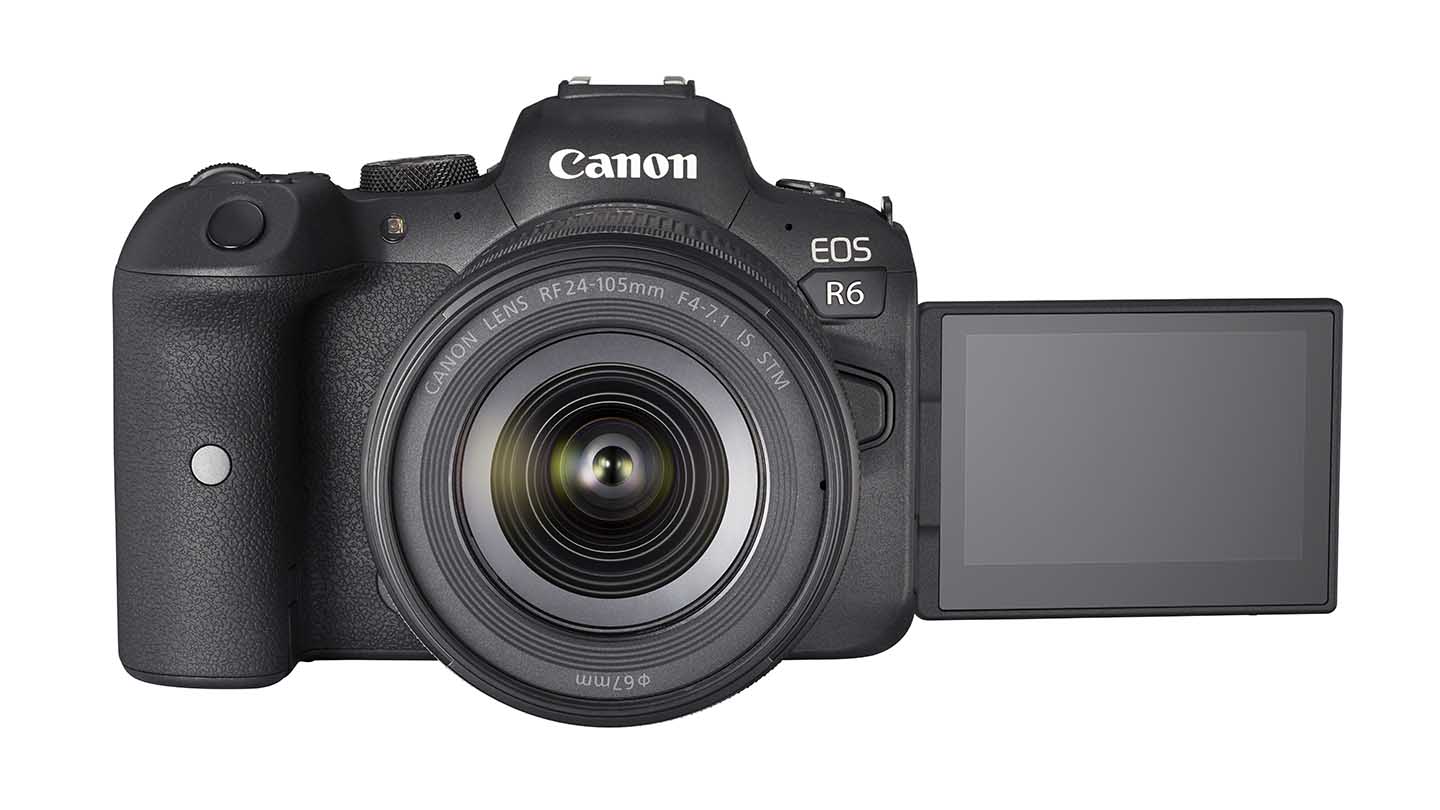
Canon EOS R6
Although it doesn’t have the class-leading video resolution of the Canon R5, the Canon EOS R6 is no slouch when it comes to video credentials.
It can record 4K (3840 x 2160) video at up to 59.94fps, however, there is a slight crop as only 94% of the horizontal area of the sensor is used. This 4K video is produced by oversampling from 5.1K for better quality. There’s also a 4K movie cropping mode available that uses 62% of the horizontal area, which means there’s much greater cropping.
If you want to add drama to action shots, Full HD footage can be shot at up to 119.88fps for slow-motion playback.
It’s possible to record the highest resolution video to an SD UHS-II card in 8-bit H.264 or 10-bit 4:2:2 H.265 and Canon Log is available for greater post-capture gradability.
Incredibly, Canon has enabled a zebra display for the first time in an EOS camera to help guide exposure.
Other niceties include an HDMI micro port (Type D) for connecting an external monitor, a microphone port and a headphone socket.
Get the latest deals on the Canon EOS R6 at Amazon UK and Amazon US.

Canon EOS R3
Canon has given the EOS R3 very similar video capability to the EOS R5 although it maxes out at 6K rather than 8K. As such, the R3 is able to capture 6K raw video at 60p using the Canon Cinema Raw Light (.CRM) format, which gives the videographer greater post-capture control over exposure, colour and white balance than when shooting non-raw video.
It’s also possible to create 4K footage oversampled from 6K at up to 60P to deliver better quality 4K movies. Canon Log 3 is also available, enabling 10-bit internal recording for greater dynamic range while 10-bit HDR PQ reduces the amount of post-production editing or grading. And for slow motion video, it’s possible to shoot 4K video at up to 120p.
Also, according to Canon, the R3 can record up to 6 hours of ‘regular’ (that is not oversampled or or high frame-rate) video or 1.5 hours at high 119.88/100p frame rates. CRM light or MP4 footage can be recorded in All-I, IPB or the smaller IPB light format at a range of bit rates.
For peace of mind, the R3 allows 6K raw video to be recorded simultaneous to two memory cards.
Get the latest deals on the Canon EOS R3 at Amazon UK and Amazon US.

Canon EOS R7
Canon is pitching it’s flagship APS-C camera, the EOS R7, as a hybrid camera, which means it has a good range of video features as well as stills-shooting options. The headline figures are that it can shoot 4K video at 60p with full-sensor readout so your lenses deliver the framing you expect. If you want to slow action more dramatically, there’s Full HD at 120p and there is the to crop the 4K 60p footage if you need to frame your subject tighter..
It’s also possible to shoot 4K 30p footage oversampled from 7K and Canon Log 3 is available if you’re keen to grade the footage or need to match the output from another camera.
According to Canon, the usual 29 min 59 second limit of video recording has been removed and it’s possible to shoot for around an hour before th camera needs to cool down.
Find the latest deals on the EOS R7 at Amazon UK and Amazon US. Also check out our Canon EOS R7 vs 7D Mark II comparison.
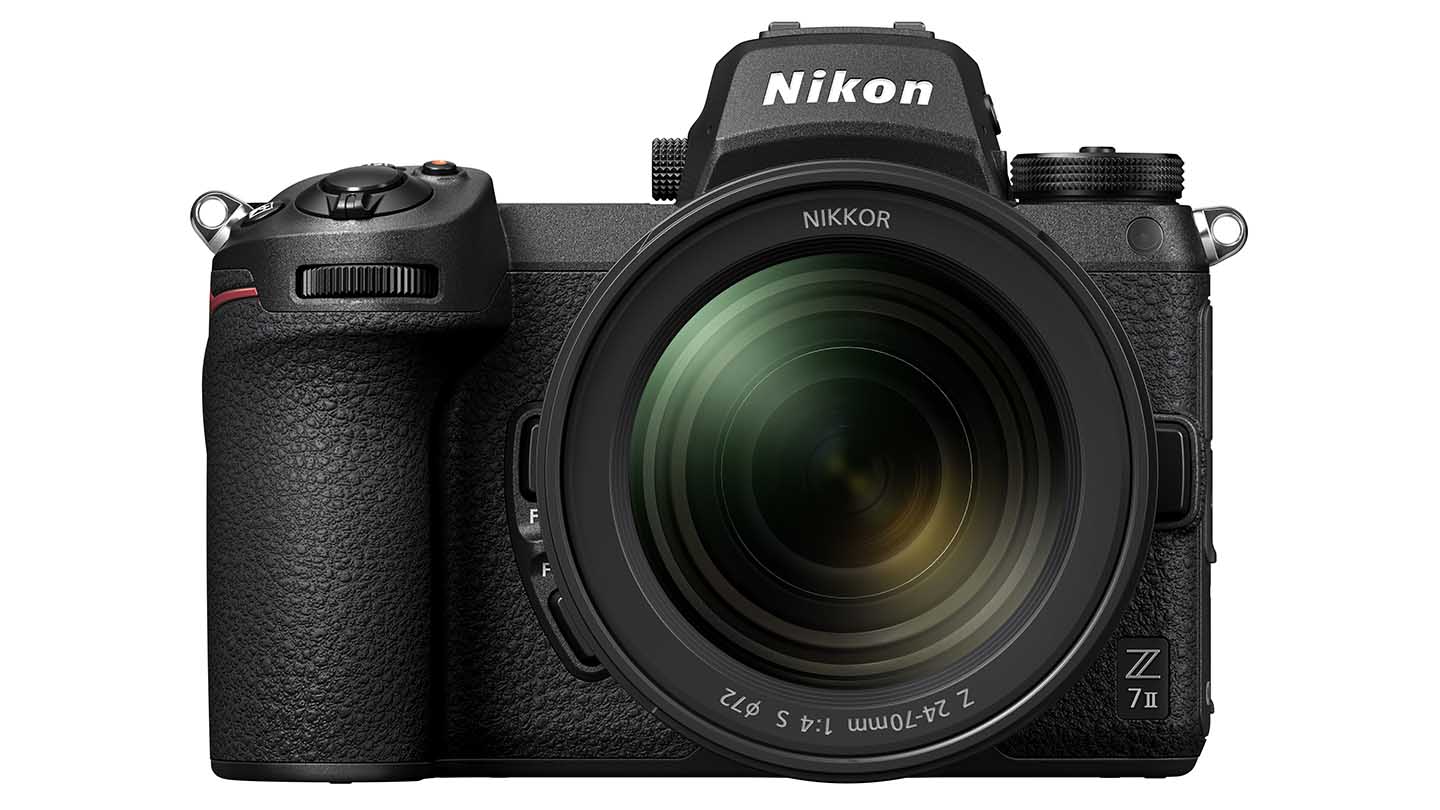
Nikon Z7 II
Like the Z7, the Nikon Z7II can record 4K UHD (3840 x 2160) video. However, the maximum frame rate is boosted from 30P to 60P, which is great news for slow-motion fans. As before, it’s also possible to shoot Full HD video at up to 120p.
The full list of video frame rates includes 4K (3840 x 2160) 60/50/30/25/24p, Full-HD (1920 x 1080) 120/100/60/50/30/25/24p, Slow-motion mode 1920 x 1080 30p x4/25p x4/24p.
If you record to a memory card in the Z7II, the video is 8-Bit, but connecting an external storage device via the HDMI port enables the video quality to be increased to 10-bit 4:2:2 with (or without) N-Log.
N-Log is useful if you want to grade your footage post-capture, or if you need to match the footage to that from another camera. Handily, timecode is available to help with editing video from multiple cameras.
With a compatible Atomos recorder connected, the Z7II can record video as Apple ProRes Raw which means you get the full benefit of the camera’s data gathering potential.
Focus peaking and zebra display are also available to help with nailing the focus and exposure. The Z7II can also shoot timelapse movies.
Get the latest deals on the Nikon Z7 II at Amazon UK and Amazon US.

Nikon Z6 II
Like the Z6, the Nikon Z6 II can record 4K UHD (3840 × 2160) video at 30P, however, 60P will be added with a firmware update that expected to arrive in February 2021. It’s also possible to record Full HD footage at up to 120p for slow-motion playback.
The full list of video frame rates includes 4K (3840 x 2160) 30/25/24p (60P to come with free firmware update in Feb 2021), Full-HD (1920 x 1080) 120/100/60/50/30/25/24p, Slow-motion mode 1920 x 1080 30p x4/25p x4/24p x5.
Footage recorded internally is in 8bit colour. However, if you connect an external recorder via the HDMI connection, the Z6II can record 10bit 4:2:2 colour with N-Log for better grading and colour matching.
The Z6II also features Timecode, focus peaking and zebra display, plus the focusing speed and tracking sensitivity can be adjusted to suit the subject or the desired look of the movie.
The big news on the video-front is that the Z6 II has eye detection focusing for humans and animals. That’s going to make producing good-quality video a lot easier for many people.
Get the latest deals on the Nikon Z6 II at Amazon UK and Amazon US.
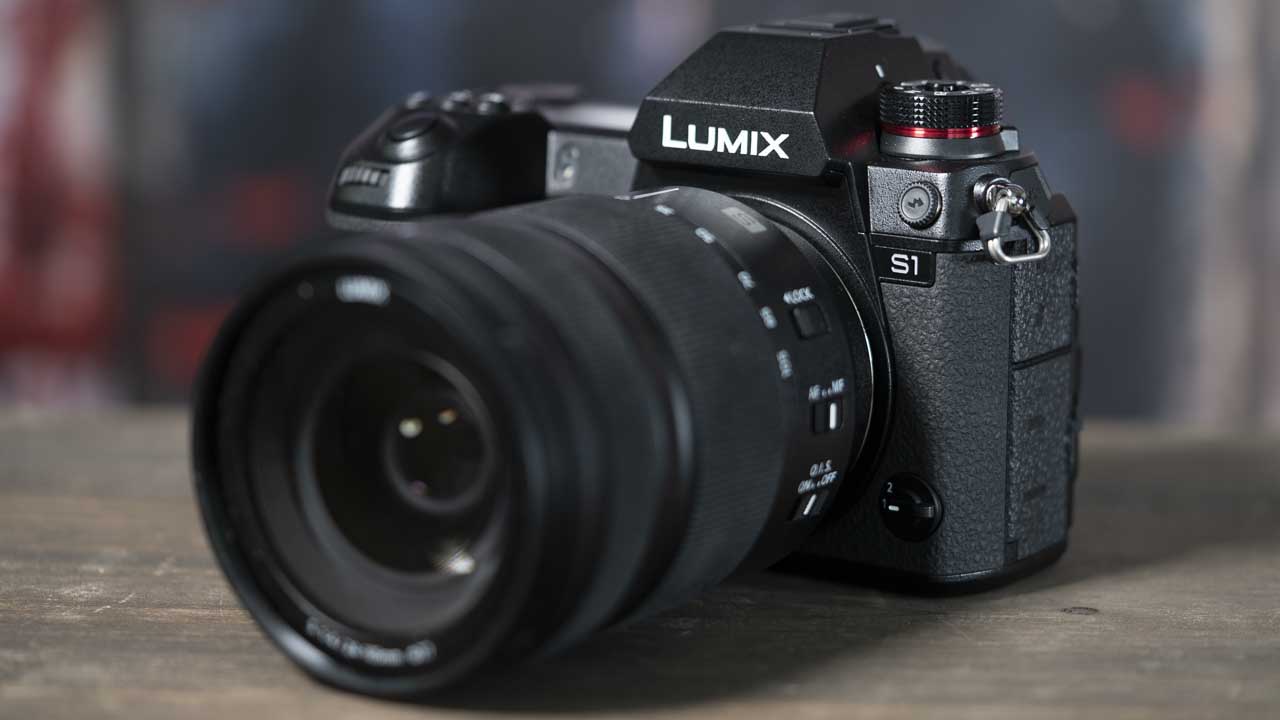
Panasonic Lumix S1
Panasonic is aiming the Lumix S1 at creatives who want to be able to shoot both stills and video. On the video front, the headline feature is that the S1 can shoot 4K (3840×2160) at 60fps and 150Mbps. However, if you want to keep the full width of the sensor, the maximum frame rate for 4K video is 30fps.
There’s also an HEVC shooting option at 4:2:0 10-bit for internal recording. This option is missing from the Lumix S1R.
Helpfully, Panasonic’s Dual IS system is incorporated. This stabilises images and video.
In addition, Panasonic is going to introduce an optional (paid for) firmware update for the Lumix S1 to introduce full V-Log recording. This will also enable 4:2:2 10-bit 4K 24p/30p internal video recording and 4:2:2 10-bit 4K 60p HDMI output.
Using the V-Log recording option is said to enable an extra two stops of dynamic range compared with the V-Log from the Panasonic GH5 and GH5S.
Get the latest Panasonic S1 deals at Amazon UK and Amazon US.
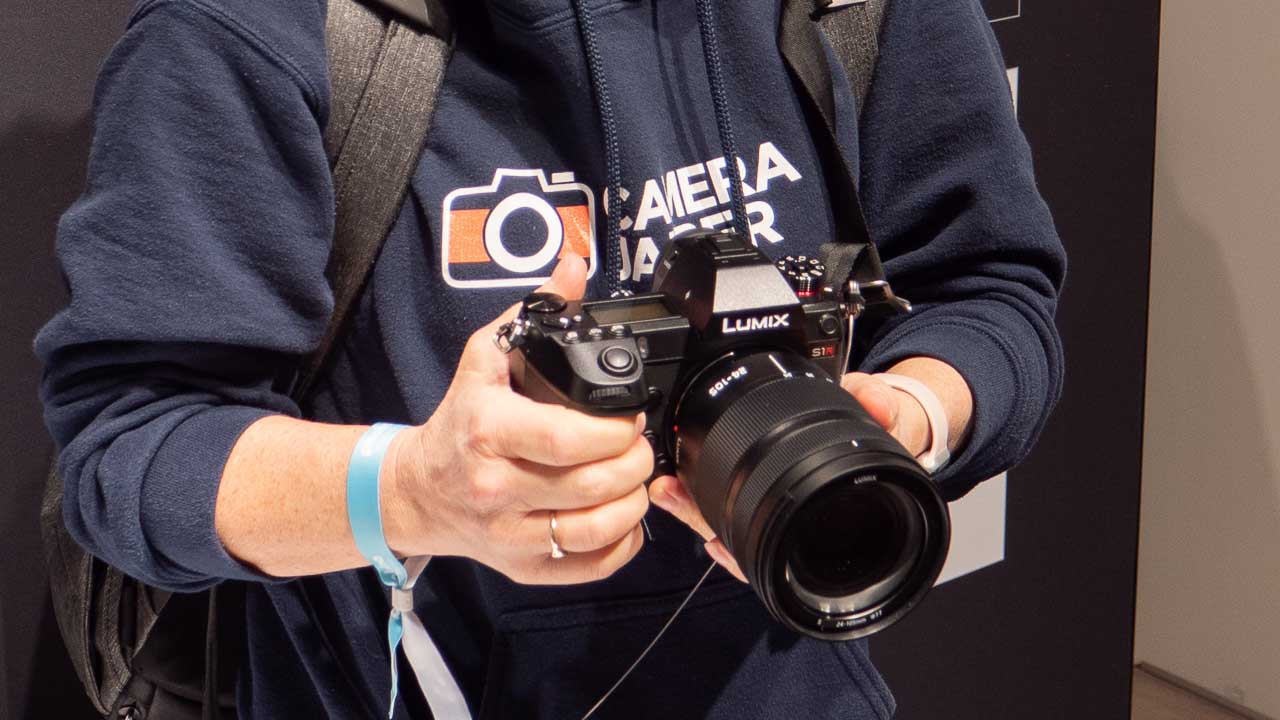
Panasonic Lumix S1R
While Panasonic created the Lumix S1 for creatives who want to shoot both stills and video, it’s aiming the S1R at professional stills photographers.
Nevertheless, the S1R can shoot 4K (3840×2160) at 60fps and 150Mbps. There’s a good range of other frame and bitrates available. However, the S1’s HEVC 4:2:0 10-bit internal recording option is absent from the Lumix S1R.
It’s also worth noting that the optional (paid for) firmware upgrade that will give the Lumix S1 V-Log recording is not coming to the Panasonic Lumix S1R.
However, like the S1, the S1R has both 3.5mm mic and headphone ports to enable audio motoring and ensure high quality.
Panasonic has given the Lumix S1R a 5-axis Dual IS system which offers a claimed 6EV of shutter speed compensation. This system combines two-axis lens-based stabilisation with 5-axis in-body image stabilisation (IBIS), and it works with both stills and video.
Get the latest Panasonic S1R deals at Amazon UK and Amazon US.
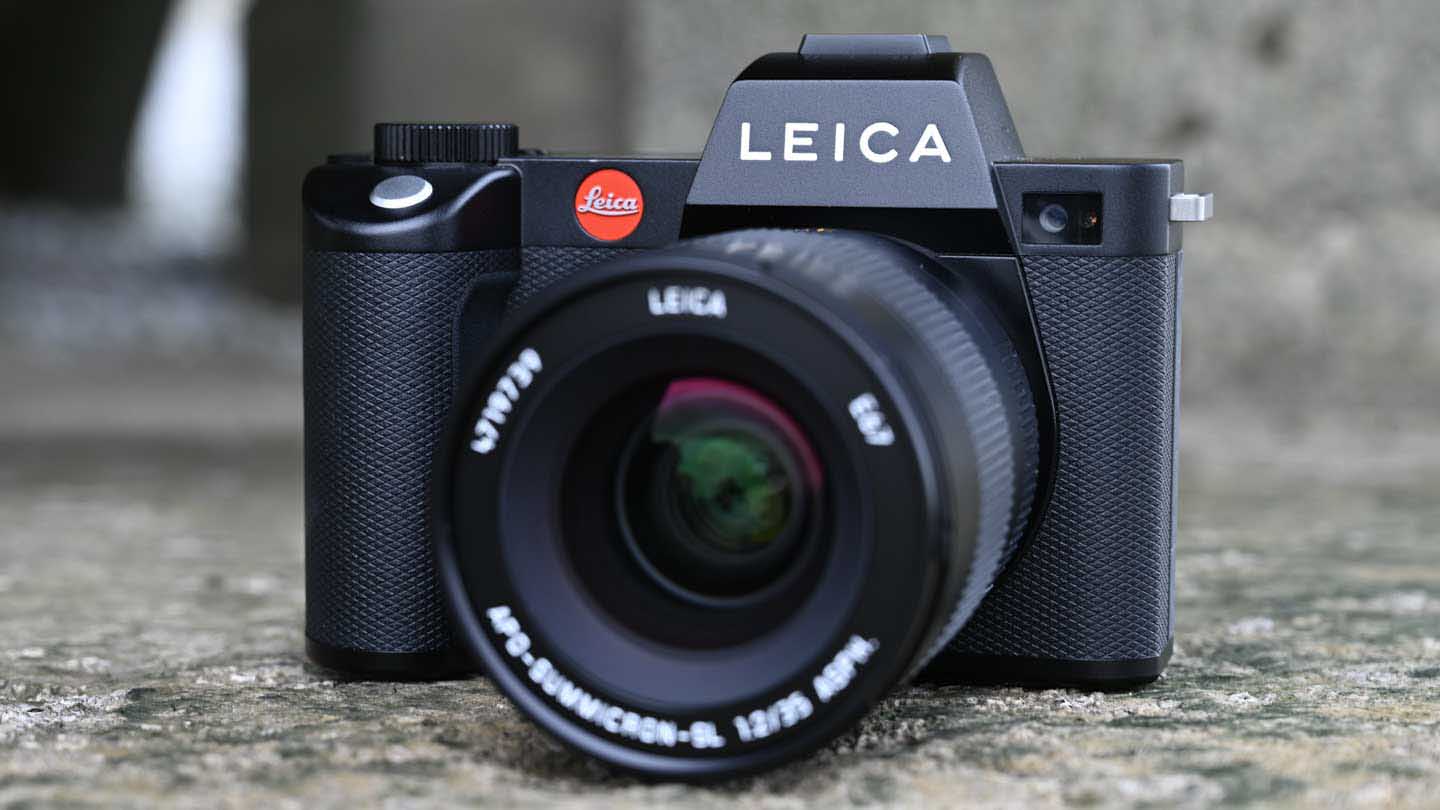
Leica SL2
Video is another area which has seen some dramatic upgrades from the previous generation – unsurprisingly given how much development has been made in this area since 2015.
The SL2 is capable of recording 5K/30fps in the MOV mode, or 4K/60fps when shooting MP4 files. Professional videographers will also be pleased to note that it can shoot 4K 30fps 4:2:2 directly in camera, or at 60fps via an external recorder.
A nice touch is that when shooting in Cine mode, all the terminology which appears on the camera changes to movie recording equivalents, so f stops become t stops, ISO becomes ASA, and shutter speed becomes shutter angle.
Get the latest Leica SL2 deals at Amazon UK and Amazon US.

Blackmagic Pocket Cinema Camera 4K
Blackmagic’s Pocket Cinema Camera 4K features a 4/3 sensor that provides 13 stops of dynamic range and can capture 12-bit CinemaDNG RAW cinema 4K at 60fps and full HD video at up to 120fps, as well as 10-bit Apple ProRes 422. Oh, and it only costs £1,000/$1,000.
That alone is worth the price tag, but there’s so much more inside this stellar camera that make it even more of a bargain. Let’s talk about its Dual Native ISO.
The Blackmagic Pocket Cinema Camera 4K boasts two gain circuits behind each photo site. Each of these is optimised for ISO 400 and 3200.
In a single ISO system, when you increase your ISO setting in low light you are effectively taking a stop from the bottom of your dynamic range and losing info from the shadows. In a dual system like the Pocket Cinema Camera 4K, the gain curve resets once you get to ISO 1250 and you’re then getting similar shadow performance as if you were shooting at ISO 100.
There’s also Blackmagic’s Extended Video Mode, which is sort of a halfway house between Film and Video modes. You don’t have to grade footage shot in Extended Video Mode, but it provides an increased dynamic range and pulls back some of the highlight clipping, particularly when shooting wider scenes.
Get the latest deals on the Blackmagic Pocket Cinema Camera 4K at Amazon UK and Amazon US.
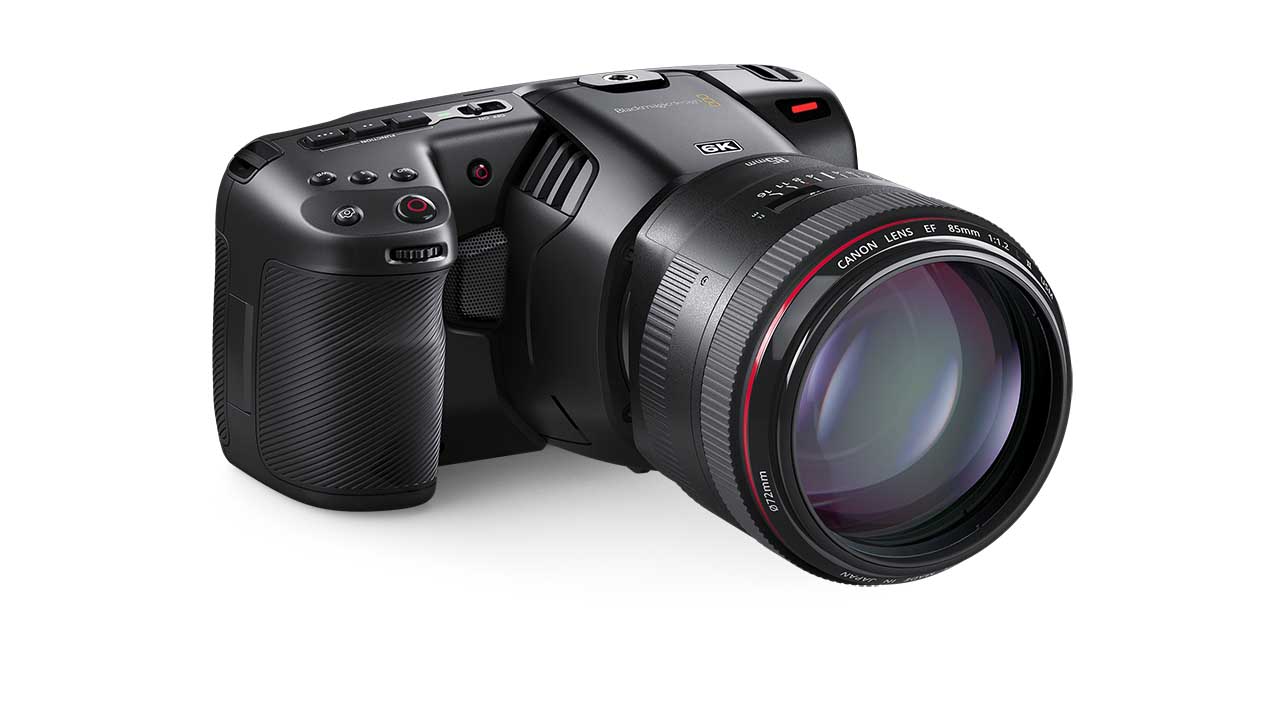
Blackmagic Pocket Cinema Camera 6K
Building on the success of its Pocket Cinema Camera 4K, Blackmagic’s new 6K model offers a 6K HDR image sensor that records up to 50fps at 6144 x 3456 16:9 or 60fps at 6144 x 2560 2.4:1 and 60fps at 5744 x 3024 17:9. For higher frame rates they can window the sensor and shoot up to 120fps at 2.8K 2868 x 1512 17:9. Users can even work in true anamorphic 6:5 using anamorphic lenses in 3.7K 60 fps at 3728 x 3104.
As well as those staggering frame rates and resolutions, the Blackmagic Pocket Cinema Camera 6K provides 13 stops of dynamic range and an EF lens mount that accommodates glass from Canon, Zeiss, Sigma and Schneider.
Also on board is Blackmagic’s dual native ISO up to 25,600, which enables the camera to capture noise-free footage in low light. We saw this on the Pocket Cinema Camera 4K, and it was astounding.
The real unsung benefit here is that you can film in 6K, but in post-production you can zoom in and re-compose for better composition without sacrificing image quality.
Get the latest deals on the Blackmagic Pocket Cinema Camera 6K at Amazon UK and Amazon US.

GoPro Hero6 Black (and the Hero7 Black, Hero8 Black, Hero9 Black)
With the Hero6 Black GoPro kept the resolution at the same maximum of 4K as in the Hero5, but pushed the frame rates to 60fps (from 30fps), and boosted 1080p to 240fps. GoPro basically doubled the headline frame rates of the previous generation of the Hero Black ation camera.
What this meant in real terms is that you could shoot slow motion footage that will stretch 1 second of film over a staggering 8 seconds.
The full list of resolutions and their partnered frames rates is impressive, but something else GoPro did is it quietly reduced the number of lower resolution options in the menu system. For instance, 480p is gone, all the additional 720p frame rates also disappeared, and 960p bit the dust as well.
This reduction of options makes sense. Best to keep it simple. That way when navigating the settings and options, the ones you want and use most often are quick and easy to select without wading through all the additional options you’re never going to use. One day we may even see a custom menu that enables you to select only the options you use the most.
Of course, the GoPro Hero8 Black and Hero7 Black can shoot 4K at 60fps, as well, but the Hero6 Black does it at a much lower price tag!
Find great deals on older GoPro cameras at Amazon UK and Amazon US.
Canon EOS-1D X Mark III
Before the EOS R5 was announced, the EOS-1D X Mark III was briefly Canon’s most advanced interchangeable lens video camera outside the Cinema EOS series. It can shoot 4K 12-bit video with raw internal recording at up to 60fps. It can even record raw and MP4 video simultaneously to two separate memory cards.
In addition, video can be recorded as 12-bit CRM files at 5.5K (5472×2886), for highly-detailed oversampled 4K footage.
Canon Log Gamma is available in 10-bit HEVC/H.265 file format and the MP4 container is available when speed is of the essence.
Movie Digital IS, as seen in the likes of the EOS C500 Mark II, has also been included to create 5-axis stabilisation.
Get the latest deals on the Canon EOS-1D X Mark III at Amazon UK and Amazon US.

DJI FPV drone
First things first: the DJI FPV drone is designed for racing, not for filming cinematic video. As we point out in our FJI FPV review, the drone’s blades often appear in your video footage. This is a drone that is designed to fly up to 87mph.
However, the DJI FPV can record 4K video footage at up to 60fps. What’s more, DJI has incorporated its RockSteady electronic image stabilisation into the drone to ensure stable, cinematic quality. The RockSteady stabilisation also eliminates the rolling shutter effect when filming fast action scenes. As we’ve seen in past DJI cameras, there’s advanced distortion correction to remove warping and the fisheye look from the footage.
As ever with DJI, there is a good selection of filming options with 4X slow motion filmed at 1080p 120fps. Footage can be filmed in either H.264 or H.264, making the most from the small SD card storage.
So the DJI FPV offers some pretty advanced video specs… but watch out for propellers in your footage.
Get the latest deals on the DJI FPV at Amazon UK and Amazon US.

iPhone 13 Pro
The iPhone 13 Pro is capable of shooting 4K video at 60fps, with full access to all three lenses when shooting. It can also record 1080p HD video at 120 and 240fps for slow motion playback. But Apple has also introduced a number of intriguing new features for videographers that should also appeal.
Firstly, there’s a new Cinematic mode which switches the camera to record Full HD video but gives control over the ‘aperture’. This works in a similar way to Portrait mode, allowing you to set a computational aperture value with the iPhone 13 Pro creating an appropriate degree of blur. As with Portrait mode in stills, it’s possible to adjust the aperture value post capture and you can tap on a subject to set it as the point of focus or the camera can use its face-detection system to find the subject.
Apple is also going to bring ProRes recording to the iPhone 13 Pro and iPhone 13 Pro Max with an iOS update. This will allow the phone to shoot up to 4K at 30fps (1080p at 30 fps for 128GB storage).
On the whole, video quality is just as good as image quality, with plenty of detail, good stabilisation and a strong uniformity of colour between the lenses.
Get the latest deals on the iPhone 13 Pro at Amazon UK and Amazon US.
Sony Xperia Pro-I
Sony’s Xperia Pro-I offers a lot of stunning features, but for videographers it provides not only the option to shoot 4K video at 60p but the ability to shoot in 4K at 120fps for slow-motion playback. For this latter option, the Xperia Pro-I shoots 4K video at 120fps with the 24mm camera and both the 24mm and 50mm cameras have Optical SteadyShot stabilisation for stills and video while the 16mm camera has electronic stabilisation.
Sony supplies the Xperia Pro-I with the Photo Pro app installed to facilitate shooting stills while video can be shot using either the Video Pro or Cinema Pro apps. Video Pro gives a good level of control but Cinema Pro is provided for more professional work.
Although the Sony Xperia Pro-I has 512GB of internal storage, it also has a microSD card port that can accept cards of up to 1TB capacity.
Get the latest deals on the Sony Xperia Pro-I at Amazon UK and Amazon US.

Huawei P40 Pro
The Huawei P40 Pro produces arguably the best image quality of any smartphone in the world, and for the first time a Huawei smartphone camera can shoot 4K video at 60fps.
In our tests, the Huawei P40 Pro shows it is capable of producing high-quality video, and the 4K results are a marked improvement upon the P30 Pro’s.
Like the P30 Pro, the Huawei P40 Pro has a four-camera system and again it’s produced in collaboration with Leica. For the P40 Pro, Huawei and Leica have created a Vario-Summilux-H 1:1.8-3.4/18-125 ASPH camera system. That means that there’s an effective focal length range of 18-125mm and a maximum aperture of f/1.8 at the widest point and f/3.4 at the telephoto point.
Get the latest Huawei P40 Pro deals at Amazon UK and Amazon US.

Samsung Galaxy S20 Ultra
In some ways, the Samsung Galaxy S20 Ultra is arguably the best smartphone for video. That the S20 Ultra adds 8K video recording at 30fps from its 108MP main camera made most of the headlines, but Samsung’s flagship smartphone camera also shoots 4K video at 60fps.
Galaxy S20 Ultra users can also now film in Pro Mode. This means you have all of the same controls that you would were you filming with a DSLR.
Another interesting feature for videographers is the S20 Ultra’s zoom-in mic. The Galaxy S20 Ultra’s microphone will effectively zoom in 6x to seek audio, and then follow that sound. This might be useful, for instance, if you were filming a live band or a speech at a wedding, and wanted to eliminate the background noise around you.
The Galaxy S20 Ultra’s quad camera array on the rear of the S20 Ultra comprises a 12-megapixel ultra-wide camera, 108-megapixel wide-angle camera, 48-megapixel telephoto camera and a depth vision camera.
Get the latest Samsung Galaxy S20 Ultra deals at Amazon UK and Amazon US.



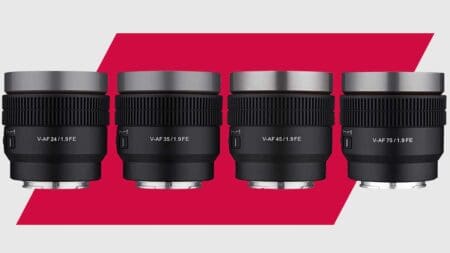

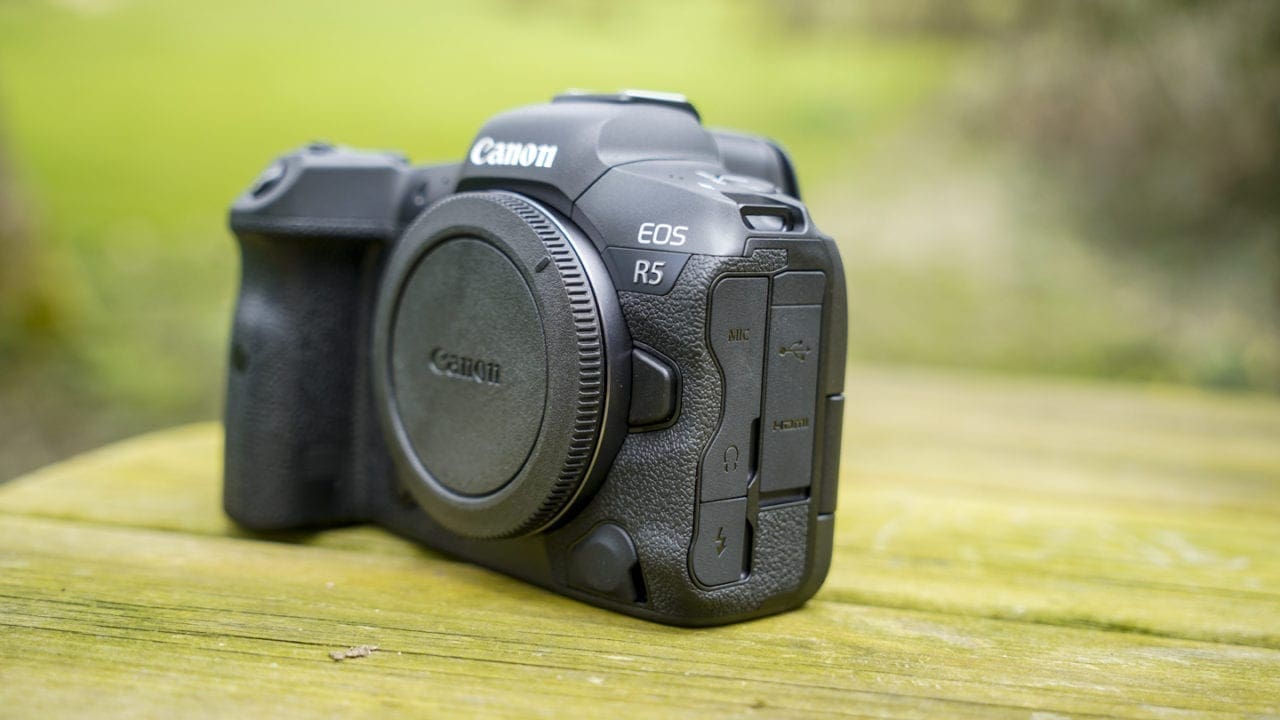

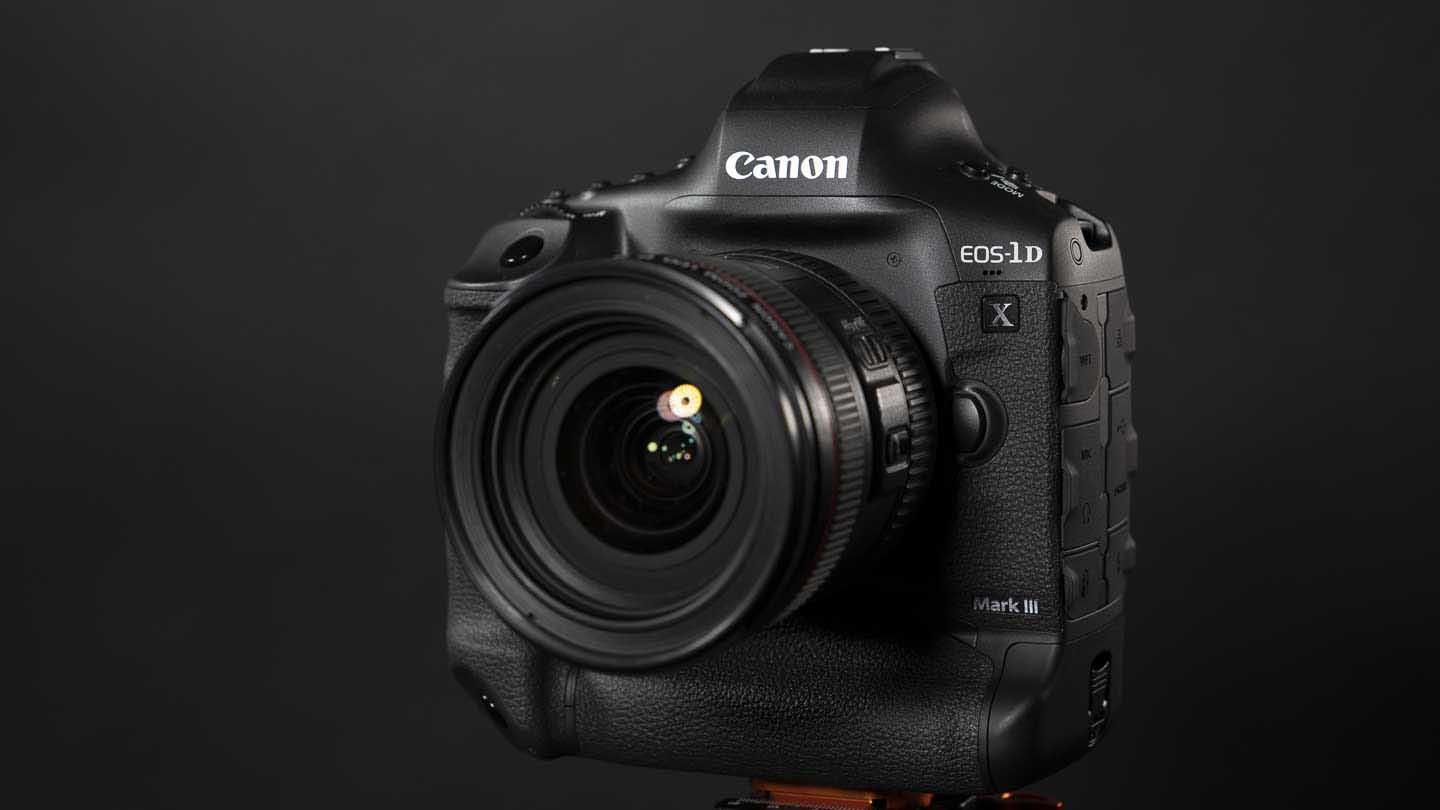

The Reviewer seems to regard shooting at 60 fps as useful only for smooth slowing down a movie. He does not consider the lower jitter or blurring when viewed at normal speed, and therefore does not comment on it.
Very interesting list. What about Canon gx10? You got phones, action cams and a drone, but no camcorders.
The GH5 price on the second hand market is awesome
I had it, but it`s a nightmare with that horror autofocus. I sold mine for a a6400 and now i miss so much that IBAS, but the bad autofocus and the 2x crop is keeping me away from MFT.
You left out the Panasonic G9, a very good camera for both video and stills, that shoots beautiful 4K/60p.
So having purchased the AR75 it seems to have an annoying issue in that it does not record audio when recording in 4K 50fps which is a bit of a limitation. Does the A74 record audio when doing 4K 50 or 60 it isn’t specifically mentioned in reviews but both models in their manuals say that the ability to switch recording audio off/on whilst available in normal mode is not available in s&q modes? Steve